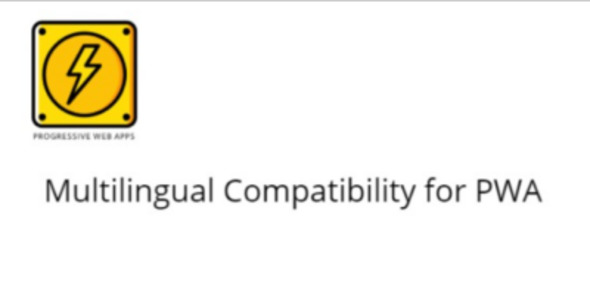Multilingual Compatibility for PWA 1.2

70+ Reviews
with 5 star Ratings

99% Customer
Satisfaction

7-Days
Money Back
Request update for this product.
$49.00 Original price was: $49.00.$2.99Current price is: $2.99.
- Version: 1.2
- Last Updated: 19/11/2024
- License: GPL
- 1 year of updates & unlimited domain usage
- Updates Will Come With A 24-48h Delay
- Original product with the lowest price ever
- Downloaded from original authors
- Instant delivery & fast downloading speed
- 100% clean and tested code
- Get this Product for Free in Membership
Progressive Web Apps (PWAs) are revolutionizing how users interact with web content by combining the best of web and mobile app functionalities. With globalization making the world more interconnected, ensuring multilingual compatibility in PWAs is no longer optional. For businesses and developers, catering to diverse linguistic audiences is a significant step toward maximizing accessibility and user satisfaction. This article explores the importance of multilingual compatibility in PWAs, implementation strategies, and best practices for seamless localization.
Why Multilingual Compatibility Matters in PWAs
Multilingual compatibility in PWAs ensures that users from different regions and languages can access your content effortlessly. This feature becomes critical for businesses targeting a global audience or operating in regions with diverse linguistic demographics.
Benefits of Multilingual Compatibility in PWAs
- Enhanced User Experience
A PWA that supports multiple languages caters to a broader audience, providing users with content in their preferred language. This personalized approach fosters trust and engagement. - Global Reach
Multilingual support allows businesses to tap into international markets, breaking down language barriers and reaching users in their native tongue. - SEO Advantages
Localized content improves search engine rankings for region-specific keywords, driving more organic traffic from different locales. - Increased Conversion Rates
When users understand your content clearly, they’re more likely to take action, whether it’s making a purchase, signing up for a service, or engaging with your platform.
Key Features of Multilingual-Compatible PWAs
To effectively cater to a multilingual audience, PWAs should include specific features that ensure smooth language transitions and culturally relevant content.
1. Dynamic Language Detection
PWAs should detect a user’s language preference based on browser settings, location, or user input. This capability ensures users are presented with the most relevant version of the content.
2. Easy Language Switching
Providing a seamless method for users to switch languages enhances usability. This could include dropdown menus or buttons prominently displayed in the interface.
3. Localized Content
Localization goes beyond translating text. It involves adapting date formats, currencies, units of measurement, and cultural references to resonate with users in different regions.
4. Search Engine Indexing for Each Language
PWAs should generate unique URLs for each language to ensure search engines index them properly. This approach aids in region-specific SEO optimization.
Challenges in Multilingual PWAs and Solutions
1. Translation Consistency
Challenge: Maintaining consistent translations across pages can be difficult with large projects.
Solution: Use translation management tools like Phrase or Transifex to streamline and centralize the translation process.
2. Performance Impact
Challenge: Loading multiple language files may slow down the app.
Solution: Use lazy loading to fetch translation files only when needed.
3. Maintaining SEO Across Languages
Challenge: Search engines might treat duplicate content as spam if not properly localized.
Solution: Use hreflang tags to inform search engines about language-specific versions of your pages.
4. Handling Complex Scripts
Challenge: Some languages, like Chinese or Hindi, have unique scripts that may not render properly.
Solution: Use web-safe fonts and thoroughly test the rendering of all supported languages.
Tools and Technologies for Multilingual Compatibility in PWAs
Several tools and technologies can facilitate the development of multilingual PWAs:
- Framework Libraries: Angular i18n, React Intl, Vue I18n
- Translation Management Tools: Lokalise, Crowdin, Smartling
- Service Workers: Cache localized assets for better performance
- SEO Tools: Google Search Console for monitoring multilingual indexing
Conclusion
Multilingual compatibility is a cornerstone of creating inclusive, user-centric PWAs. By integrating dynamic language support, localized content, and SEO optimization, businesses can enhance user experiences, boost engagement, and tap into diverse global markets. Following best practices and leveraging the right tools ensures that your PWA stands out as a reliable, accessible platform for users across linguistic and cultural divides.
You must be logged in to post a review.




Reviews
Clear filtersThere are no reviews yet.